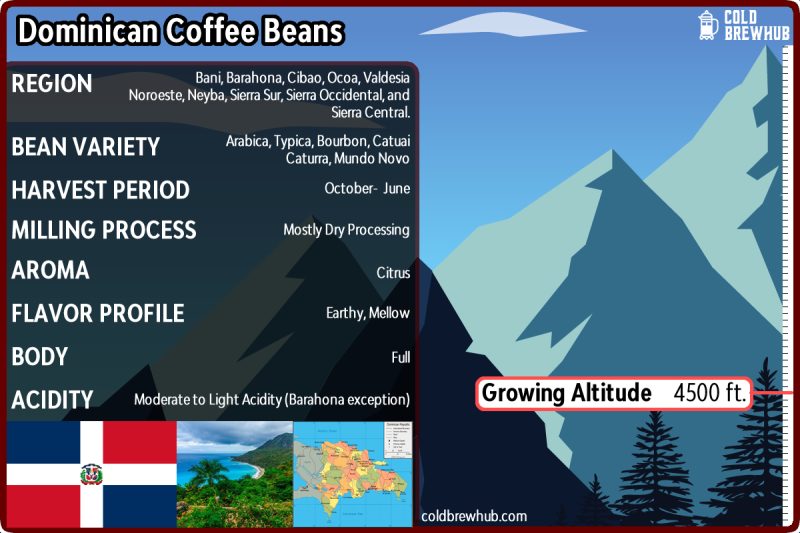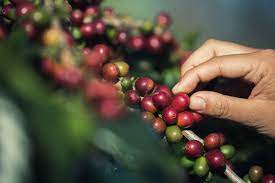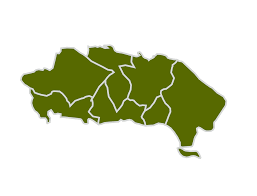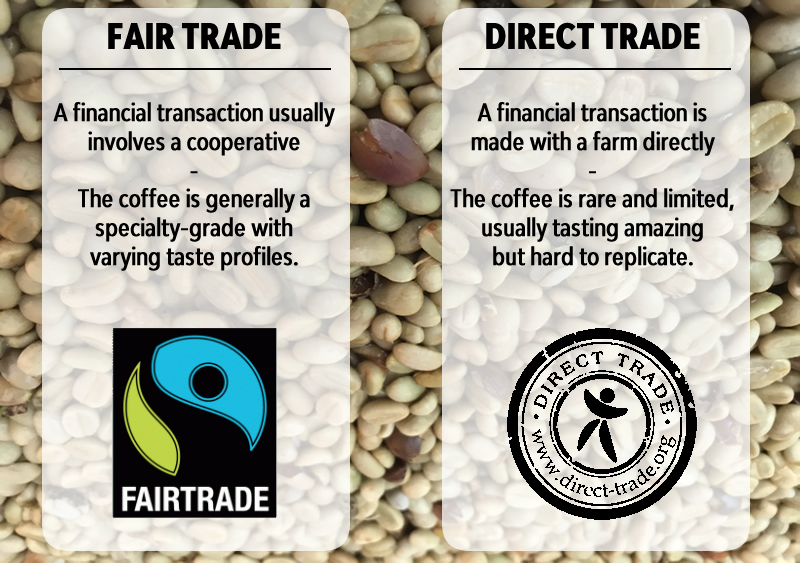When I think about the Dominican Republic, I picture white sand beaches, turquoise water, and palm trees under a cloudless blue sky. Rugged green mountains tower in the distance.
Sipping a cup of dark-roasted Dominican coffee can take me back there, with a rich flavor as memorable as that beautiful island nation.
Dominican Republic Coffee is Good
Dominican coffee, like Jamaican or Puerto Rican coffee, is considered a Caribbean coffee. It's a cup of freshly roasted coffee with a soft, sweet flavor.
Although it's a full-bodied, aromatic medium or dark roast, it doesn't taste bitter. The coffee has an earthy undertone with notes of chocolate, candy, caramel, or fruit in some varieties.
Did You Know? The Dominicans mostly drink their coffee black (negro) with lots of sugar (azucar).
The Perfect Place to Grow Coffee
Found on the island of Hispaniola in the Caribbean, the Dominican Republic takes up half the island. In the other half stands the country of Haiti.
The Dominican Republic makes quality coffee because it has tropical and mountainous terrain, receiving rain throughout the year.
Farmers grow coffee at elevations between 2,000 and 5,000 feet up. With consistent rain and those elevations, coffee plants take longer to mature, leading to denser beans with more complex sugars, leading to better flavor. The result is some of the finest coffee available in the world.

Only ten percent of the coffee in the Dominican Republic is grown in the sun. The remaining ninety percent is shade-grown cocoa, palms, plantains, and banana trees, all of which provide shade.
The shade trees help guard against soil erosion and the contamination of the watershed. They also offer biodiversity and a natural habitat for birds, lizards, and orchid plants.
Because of the shaded zones, coffee farmers don't need to use chemical fertilizer or pesticides. They grow organic coffee, even if they cannot claim it as certified organic.
The majority of coffee grown, about ninety percent, is the arabica variety. About ten percent of the cultivated coffee is the robust variety. Coffee plants take about four years to mature and yield coffee beans.
First, fragrant white flowers bloom. Small green beans replace them.
The beans then turn bright red, forming coffee "cherries." A ripe coffee cherry is firm and shiny—the riper the coffee cherry, the darker the coffee and the more complex the sugar.
Harvesting the Coffee Beans
Farmworkers harvest Coffee from September to May. They handpick the best rip beans only.
The majority of farmers process the coffee beans in a wet mill to sort them. The best beans float while the others sink.
The best beans are sorted again by density—the denser the bean, the better the coffee.

Farmworkers remove the coffee cherries by one of two methods, the natural method or the washed method.
Natural Method
In the natural method, workers dry and ferment the beans, and then disappears, remove the skin and pulp after.
Washed Method
In the washed method, workers remove the cherries and then allow the beans to ferment in water.
How long the beans ferment depends upon the bean variety. If the beans ferment in water, they then dry in the sun, followed by a drying machine.
Some coffee farmers pre-roast their beans next, sometimes over an open fire in an iron pot or within a specially designed roaster, for forty-five minutes to an hour. They may add cinnamon sticks for extra flavor.
In the last step, the whole beans are sealed in airtight bags because oxygen degrades the coffee's flavor. The whole beans are then ready to list for sale.
Note: Always grind your beans right before use for the best flavor & freshness.
Coffee-Growing Regions in the Dominican Republic
There are up to twenty-five different zones for growing coffee on the Dominican Republic's four mountain ranges.
The best-known of these coffee-growing regions are the Cibao, Bani, Ocoa, Barahona, Azua, Juncalito, and Jarabacoa.
Coffee grown in the Cibao, the northern part of the country, is a medium roast, full-bodied and low in acidity.

Coffee Regions in Dominican Republic
In the Bani, a southern region, the soil is moist and fertile. The coffee grown there has mild acidity and is smoother rather than full-bodied.
The Ocoa is also in the south, and its coffee tastes soft rather than bold. The Barahona region, in the southwest, grows coffee famed for its robust flavor and acidity.
This region yields the best Dominican coffee, the beans described as premium and gourmet. In Azua, in the southern part of the country, tobacco is grown along with coffee. Juncalito produces a coffee known for its fruitiness.
The Jarabacoa region prides itself on smooth, aromatic coffee with medium body and high acidity.
The Dominican Republic is Famous for Coffee
The Dominican Republic has a reputation around the world as one of the best coffee producers. The country has a long tradition of cultivating coffee, around three hundred years or so, depending on which historical account you believe.
One report states that the Spanish colonists introduced coffee in the early eighteenth century, when they brought it over from the island of Martinique.
A different account dated the introduction to around 1735 when a man named Gabriel de Cliu brought the beans into the Dominican Republic.

Small-scale farming started then, although commercial export of coffee didn't begin until 1872.One report states that the Spanish colonists introduced coffee in the early eighteenth century, when they brought it over from the island of Martinique.
A different account dated the introduction to around 1735 when a man named Gabriel de Cliu brought the beans into the Dominican Republic. Small-scale farming started then, although commercial export of coffee didn't begin until 1872.
Although it is ranked thirty-first globally for coffee exports, the Dominican Republic consumes most of its coffee locally. Its exports of 350,000 to 500,000 bags of coffee a year are only twenty percent of the coffee grown and produced.
The Dominican Republic Has a Strong Coffee Culture
Many people here love their coffee, as the Dominican Republic has a strong coffee culture. Some say that coffee is their national non-alcoholic drink.
The quickest way to offend a Dominican is to refuse a cup of espresso coffee when offered.
The average person drinks several cups a day, either brewing it at home with a coffee maker or ordering it from a street vendor or café.

Countries with strong coffee culture and a willingness to experiment resulted in a country gaining an international reputation for coffee.
An independent organization, the Dominican Specialty Coffee Association (ADOCAFES), makes sure that coffee production and the quality coffee produced continue to meet rigorous quality standards. ADOCAFES also experiments with developing new types of coffee.
Café Santo Domingo coffee is one of the best Dominican coffees and one of the most familiar coffee brands around the world. Usually, the Dominican Republic coffee sells under this name.
Made from a blend of beans from Barahona and Cibao, it's a well-known fragrant coffee with full-body, medium to light acidity, and earthy tones.
The Dominican Sierra Group distributes the most popular coffee in the Dominican Republic, Café Santo Domingo coffee. It has been grown by the Perello family for more than sixty years.
Dominican Coffee Equals High-Quality Beans and Great Flavor
The Dominican Republic prides itself on having among the best quality coffee beans in the world. Farmworkers handpick the beans and leave the over-ripe and under-ripe beans behind. The sorting process yields the densest beans and, therefore, the best coffee.
Coffee growing and production in the Dominican Republic is becoming more and more environmentally conscious. The farming is mostly still on a small scale, even today; most individual growers have eight acres or less land.
Did You Know? There are an estimated 50,000 or more coffee farms on the Dominican Republic's 18,704 square miles.
The majority of farmers use organic farming methods. Organically grown beans make up about ninety percent of the coffee harvest in the Dominican Republic. It is mostly the arabica variety.
This type of arabica is a single-origin coffee not generally used in blends because of its premium status. You'll read a "100 arabica" guarantee on those bags of coffee beans.
Roasting the whole beans using environmentally friendly roasters that reduce the coffee product's carbon footprint is of the utmost importance.
If you're traveling in the Dominican Republic, be sure to try the best Dominican coffee. Just remember that they serve their coffee sweet. Be sure to ask at the cafe for the coffee to be served sin azucar (without sugar), so you can add only the sugar you want.
Buying Dominican Coffee at Home
If you're not traveling in the Dominican Republic, probably the best way to enjoy Dominican Coffee is to order it online. Check out the available coffee product from the Dominican Republic.
There will be many coffees to choose from, including the ever-popular Santo Domingo coffee 16 oz bag. Read the descriptions carefully to understand the facts about each brand. What will make that perfect cup of coffee for you?
Buying Fair Trade Vs. Direct Trade
Do you want to buy fair trade or direct trade coffee? Fairtrade focuses on improving farmers' lives, while direct trade concentrates on maintaining and improving the coffee quality.

Both eliminate the middleman in coffee buying. In the end, both help improve the lives of the farmers because enhancing the quality depends on stable long-term trading relationships and environmental responsibility.
Both of those can only come about with fair wages, transparency, and accountability. Only a fair trade coffee will carry a "fair trade certified" logo.
Other Information to Consider When Buying
Make sure the sales listing states that the product comes from the Dominican Republic.
Do you want to buy single-origin coffee or a blend?
Blends from the regions of Cibao and Ocoa are popular, as is a single-origin arabica medium roast. You may see it marked as "100 arabica."
Do you want to buy organic coffee?
If it's organic Dominican Republic coffee, it will carry a "USDA organic" certification.
Is the roasting company listed?
Most Dominican coffee beans ship to a roaster outside of the Dominican Republic (i.e., Fresh Roasted Coffee LLC). Still, specialty roasters are opening in the Dominican Republic as well. Many sales listings are full of information.
What kind of flavor notes are you expecting?
They will vary depending upon the qualities of the bean used. Here are just a few examples of flavor notes: hazelnut, vanilla, caramel, baked apples, berries, grapes, vanilla, spices, chocolate, almonds, and molasses.
What kind of roast do you prefer?
Dominican coffees will typically range from dark, medium-dark, and medium roasts.
Is acidity a consideration?
Many Dominican coffees tend to be lower in acidity, which is excellent for those whose stomachs are sensitive to caffeine.
Which one works best for your situation?
You'll also need to choose between ground coffee and whole bean. Often the suggested brewing method is also listed.
The last decisions may be the easiest: How much do you need? How many packs come with the package? What ounce bag are you buying at what price?
Brewing the Perfect Cup of Coffee
To brew a perfect cup of Dominican coffee at home, grind the whole beans right before use for maximum flavor. All that's needed is boiling water and ground coffee. The water should be at a soft boil, around 198 to 205 degrees Fahrenheit.

Depending on the coffee, you should be able to use a stovetop espresso maker, French press, or any other coffee maker. Dominican locals use a brewer called a "long espresso." Water is forced by steam pressure through a tube to the coffee.
FINAL THOUGHTS
And that's it. Kick back and savor the rich taste of Dominican coffee. If you close your eyes, you may even feel like you're on a Caribbean island, enjoying the sunshine.
